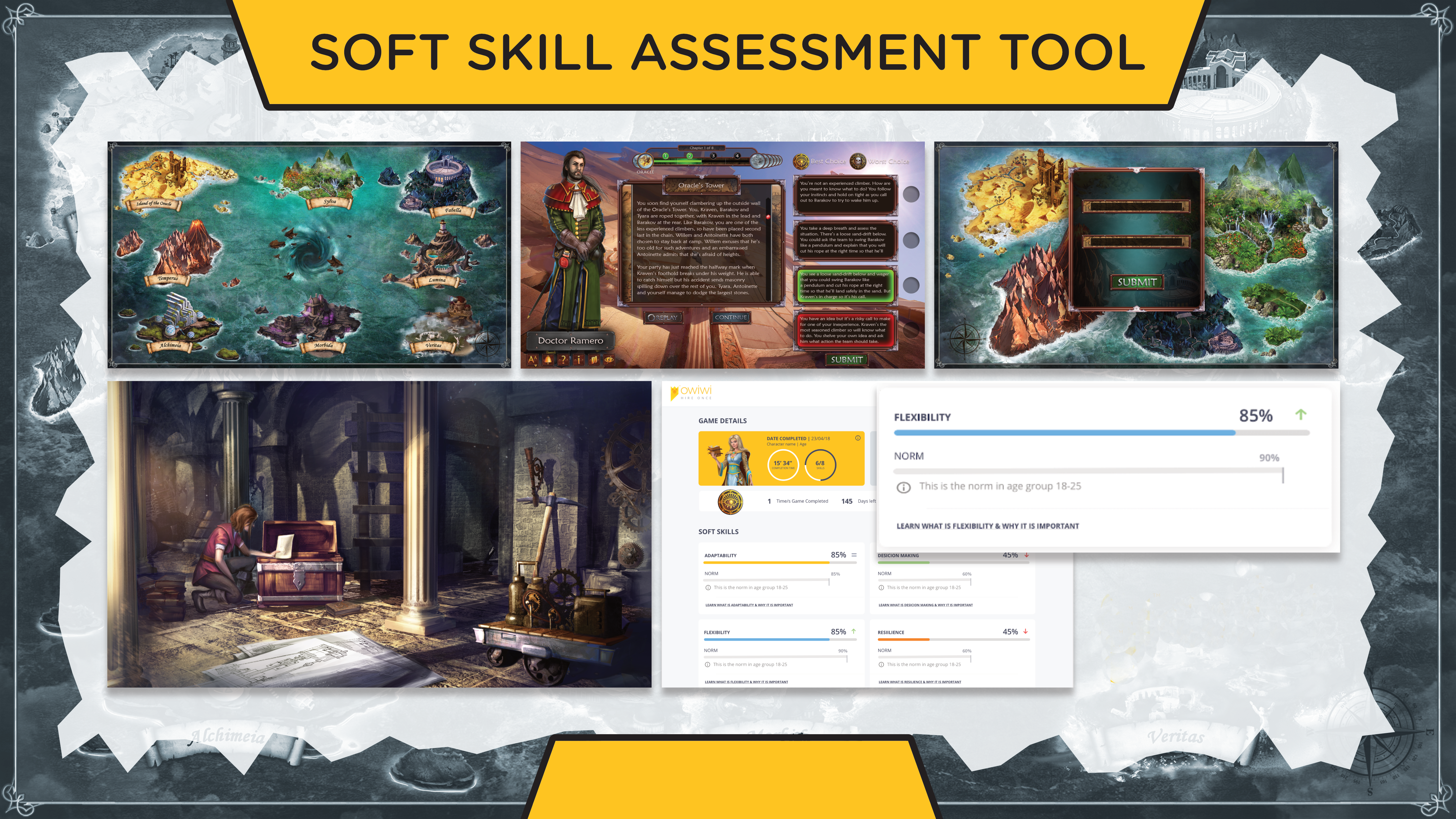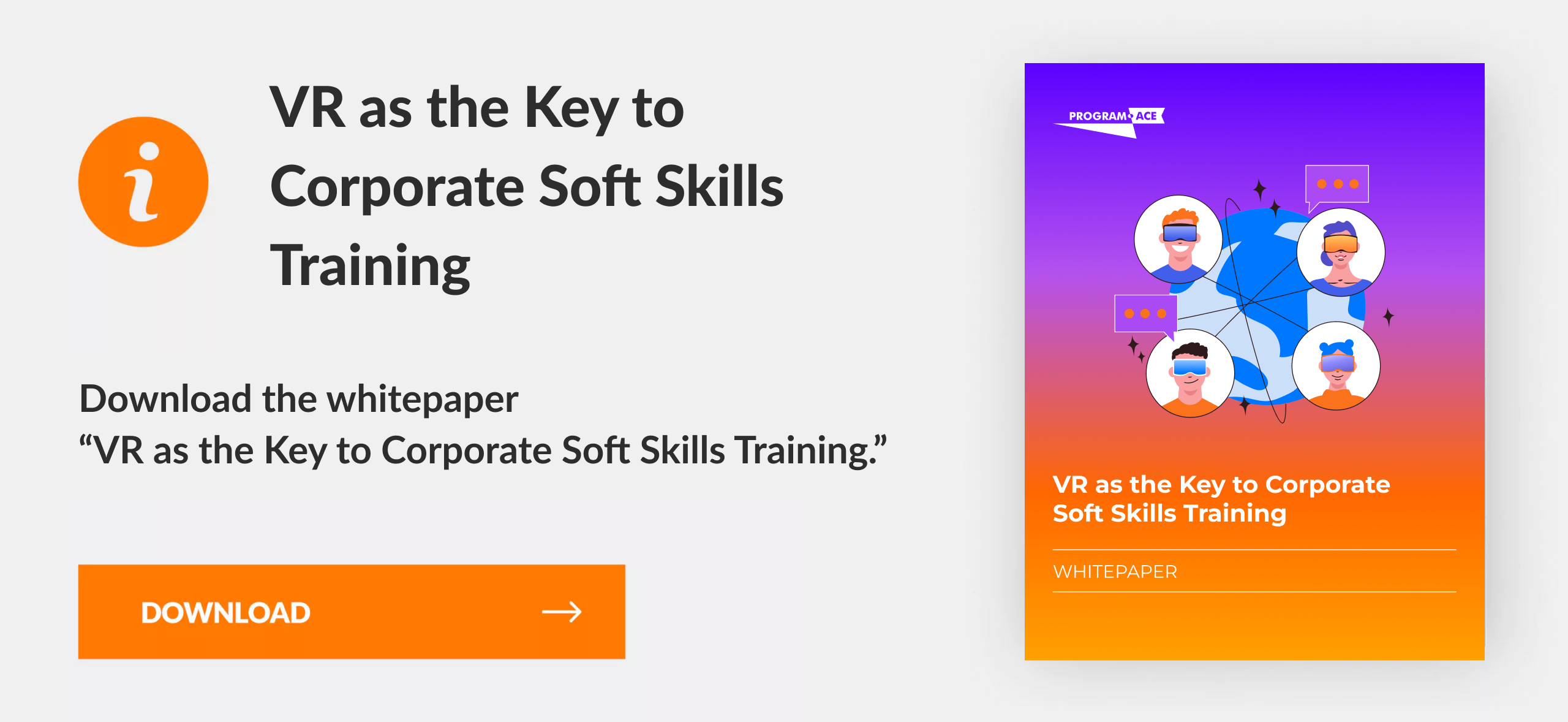Virtual training is rapidly transforming how businesses educate their workforce. Amid shifting global markets and technological advancements, companies are embracing virtual environments to upskill employees efficiently and cost-effectively. Virtual training offers a flexible, scalable approach that aligns with diverse learning styles and schedules, making it an indispensable tool for Learning & Development (L&D) managers aiming to boost workforce productivity.
This guide explores the direct benefits of virtual learning systems and provides actionable insights for L&D professionals. By integrating sophisticated virtual training platforms, organizations can enhance employee skills and drive significant improvements in operational productivity.
Through this exploration, L&D managers will discover strategies to effectively implement virtual learning and measure its impact on their teams. Join us as we delve into the ways virtual training can serve as a catalyst for employee development and organizational growth.
Why Productivity Starts with Virtual Learning
Productivity in the modern workplace begins with efficient training methods. Virtual learning platforms offer streamlined, accessible training solutions that employees can access from anywhere. Virtual environments enable quicker competency and faster return to productive work by reducing downtime and accelerating the training process. Companies leveraging these tools report shorter training cycles and improved employee performance metrics.
Virtual Learning as a Strategic Tool for Workforce Growth
Virtual training transforms workforce development by tailoring education to current business needs. Scalable, personalized, and engaging, these platforms boost your company's growth. Here’s how virtual learning reshapes training approaches:
- Enhanced accessibility. Employees, regardless of location, access training sessions, ensuring opportunities are boundless.
- Improved engagement. Captivating interactive elements and multimedia content lead to higher retention rates and enjoyable experiences.
- Customized learning paths. Tailoring training materials to align with individual career goals facilitates both personal and professional development.
- Cost efficiency. Reducing the need for physical resources, travel, and venue costs makes virtual training a cost-effective solution.
- Consistent quality. Standardizing training ensures each team member receives the same high-quality resources.
- Rapid skill acquisition. Technologies such as VR offer simulated environments where employees practice skills in real time, accelerating the learning process.
Adopting virtual training not only enhances productivity by equipping employees with necessary skills more efficiently but also keeps your workforce competitive amidst industry shifts.
Why L&D Managers Must Rethink Traditional Training Models
VR training applications are redefining the approach to employee development. The limitations of conventional training models are becoming more apparent, prompting L&D managers to seek innovative alternatives that offer both effectiveness and efficiency. Here are compelling reasons to adopt VR training:
- Real-world Application. VR scenarios simulate real-life challenges, providing employees with practical skills that translate directly to their roles.
- Increased Retention. The immersive nature of VR training enhances memory retention by engaging multiple learning senses.
- Immediate Feedback. Interactive VR environments offer real-time feedback, allowing learners to adjust their approach and understand concepts more deeply.
- Adaptive Learning. VR applications can adjust the difficulty level based on the learner's progress, providing a customized experience that meets individual skill levels.
- Safe Learning Environment. Trainees can practice hazardous or difficult tasks within a controlled, risk-free VR setting, which is crucial for high-risk industries.
- Scalability. Virtual training can be easily scaled to accommodate an increasing number of participants without significant additional costs.
By integrating VR into training strategies, L&D managers not only enhance the learning outcomes but also significantly contribute to the overall agility and productivity of the workforce. Such a strategic shift not only modernizes training practices but also aligns them more closely with contemporary business requirements and employee expectations.
What Is Virtual Learning in the Context of Workplace Training?
Virtual learning in workplace training refers to using digital platforms to deliver educational content and simulations. By leveraging technologies such as VR in education, employees experience immersive learning that enhances their skills in real-time scenarios, directly impacting their professional effectiveness and productivity.
Understanding What Is Virtual Learning and Its Key Components
Virtual learning revolutionizes traditional training methods by integrating advanced technologies to create dynamic, interactive educational environments. Here’s a breakdown of its fundamental components:
- Technology-driven delivery. Utilizes advanced platforms, including VR, to facilitate immersive learning experiences.
- Interactive content. Engages participants with interactive modules that provide instant feedback, making learning more effective.
- Flexible learning schedules. Allows employees to learn at their own pace, accommodating different learning styles and work schedules.
- Scalability. Adapts easily to increasing numbers of learners without a need for extensive additional resources.
- Data-driven insights. Employs analytics to track progress and optimize training strategies based on real-time data.
Understanding these elements enables organizations to implement virtual learning effectively, enhancing their training programs and employee skill development.
How Virtual Platforms Support Continuous Learning on the Job
Virtual platforms are crucial in promoting continuous, scenario-based learning within the workplace. They support skill development and refinement through the following mechanisms:
- Realistic job scenarios. Virtual environments simulate real-world challenges specific to job roles, enabling employees to practice and hone necessary skills without the risks associated with real-world applications.
- Direct job application. Skills learned can be immediately applied, allowing employees to integrate new knowledge into their daily tasks, reinforcing learning, and enhancing job performance.
- Feedback for improvement. Platforms provide instant feedback on performance, helping learners quickly correct mistakes and improve their understanding and execution of tasks.
- Ongoing skill enhancement. Regular content updates and new scenario introductions keep skills current in rapidly changing industries.
- Collaborative learning opportunities. Facilitate sharing knowledge and strategies among colleagues, strengthening team collaboration and problem-solving capabilities.
Virtual platforms ensure that learning is not only an initial training event but a continuous part of an employee's career development path, adapting to ongoing changes in the workplace and industry.
From Webinars to AI-Based Systems — Common Formats Used Today
The landscape of virtual learning encompasses a variety of formats, each tailored to different educational needs and learning styles. Here’s an in-depth look at some of the most prevalent formats:
- Webinars. These are live, interactive sessions ideal for large groups, offering real-time communication and the ability to address questions and feedback immediately.
- E-learning modules. Structured, self-paced courses that often include assessments to gauge progress; they are suitable for foundational knowledge and standardized training.
- Virtual classrooms. These replicate the experience of traditional classrooms by allowing live interactions through digital platforms, facilitating real-time discussions and learning.
- Mobile learning. This format delivers training directly to mobile devices, perfect for learners who require flexibility and access to learning materials anytime, anywhere.
- AI-driven learning systems. These sophisticated platforms use artificial intelligence to tailor the learning experience based on individual performance, offering personalized learning paths and adaptive difficulty levels.
Each format has its strengths, catering to different aspects of learning and development needs in today's fast-paced, technology-driven work environments.
The Key Benefits of Virtual Learning for Workforce Productivity

Virtual learning enhances workforce productivity by introducing flexible and engaging training solutions tailored to business objectives and employee needs. Employers witness notable improvements in operational efficiency when they integrate technology-enhanced learning environments that offer scalability and accessibility. Key benefits include:
- Enhanced skill acquisition. Employees can master new competencies faster as virtual learning environments deploy interactive simulations and real-time feedback mechanisms.
- Greater engagement. Engaging and interactive content motivates learners, leading to higher retention rates and a more enjoyable learning experience.
- Customization of learning experiences. Training programs are easily tailored to address specific skills and performance gaps, making learning more relevant and effective.
- Accessibility and flexibility. Employees have the freedom to access training materials from anywhere, anytime, which aligns with diverse schedules and supports remote work arrangements.
- Cost-effectiveness. By minimizing the need for physical training resources, travel, and in-person sessions, virtual learning reduces overall training costs.
Organizations adopting virtual learning strategies notice a faster transformation in their workforce capabilities, ensuring that employees are well-prepared to meet current and future challenges. Virtual learning not only facilitates the immediate application of new skills but also supports ongoing professional development, making it a cornerstone of modern business strategy.
Shorter Learning Cycles Without Workflow Disruption
Virtual reality simulations are pivotal in achieving shorter learning cycles in workplace training, minimizing disruption to daily workflows. By simulating realistic work scenarios, these tools allow employees to practice and refine their skills without the risks associated with on-the-job training. The integration of virtual reality into training strategies leads to several significant advantages:
- Immediate skill application. Virtual environments enable employees to apply new skills in simulated contexts that closely mirror real work situations.
- Flexible learning schedules. Employees can engage with training modules during downtimes or at their convenience, which helps maintain productivity.
- Tailored learning experiences. Training can be customized to address the immediate needs of the business and individual learning styles, enhancing the effectiveness of the training.
- Rapid adaptation to changes. As business needs evolve, virtual reality content can be quickly updated to cover new skills and technologies, keeping the workforce agile.
- Consistent training quality. Virtual training provides a standardized learning experience for all employees, ensuring uniformity in the acquisition of skills and knowledge.
Organizations benefit from a well-trained workforce capable of adapting to new challenges swiftly and efficiently. The strategic implementation of virtual training tools optimizes learning outcomes and aligns employee development with organizational goals, fostering a culture of continuous improvement and innovation.
On-Demand Access That Supports Just-in-Time Learning
Employees today benefit immensely from immediate access to training resources, vital for quick adaptation to evolving work demands. On-demand virtual learning tools enable direct application of new skills:
- Instant problem-solving. Workers access specific modules to resolve issues as they arise, seamlessly integrating solutions into daily tasks.
- Efficient onboarding. Fresh hires engage with necessary training modules right when needed, shortening the ramp-up period to full productivity.
- Increased engagement through relevance. Staff members engage more deeply with training directly applicable to their current tasks, solidifying their learning process.
Such streamlined access not only bolsters individual competency but also reduces downtime, thereby sustaining continuous business performance. Organizations adopting on-demand learning systems empower employees to control their professional development, ensuring they possess the skills required for immediate tasks and future challenges. This strategy promotes a proactive learning culture, vital for personal growth and organizational advancement.
Personalized Learning Paths That Target Role-Specific Skills
Tailored learning paths are pivotal in developing specific competencies that enhance job performance and career progression. These customized paths cater to various benefits:
- Catering to individual learning preferences and speeds. Every employee can learn in a manner that best suits their style and pace, enhancing both motivation and information retention.
- Directly addressing individual skill needs. Training programs are designed to fill specific skill gaps, equipping employees with the precise expertise needed in their roles.
- Facilitating continuous professional development. Employees are prepared for upcoming responsibilities, paving the way for smooth career transitions.
Adopting personalized learning paths demonstrates an organization’s dedication to nurturing its workforce’s growth, recognizing the distinct career trajectories of each employee. As learners advance through customized modules, they not only better fulfill their current roles but are also primed to tackle future challenges.
Such a strategic emphasis on tailored development boosts job satisfaction and loyalty while elevating the overall expertise within the company, thus aligning employee growth with organizational objectives and enhancing collective success.
Is Virtual Learning Effective for Real Workforce Outcomes?
Virtual learning has surged in popularity, but its effectiveness for tangible workforce outcomes remains a topic of extensive debate. Evaluating whether these digital education tools truly enhance employee performance, productivity, and satisfaction is essential. Insightful analyses reveal the potential of virtual learning environments to offer substantial benefits across various business operations, provided they are implemented thoughtfully and with clear objectives.
Measurable Impact on Employee Performance and Retention
Virtual learning's role in enhancing employee performance and retention is increasingly recognized through quantitative metrics and qualitative feedback. Organizations implementing these tools report:
- Improved performance metrics. Learners who engage with virtual training often show faster task completion and improved work quality.
- Higher retention rates. Companies observe a lower turnover rate when employees feel the firm invests in their personal and professional growth.
- Enhanced employee engagement. Engaged learners are likelier to stay with a company as they perceive continuous development opportunities.
This evidence supports the effectiveness of virtual learning platforms in boosting performance and fostering a loyal workforce. Employers benefit from a dual advantage of increased output and decreased costs associated with recruitment and training new hires, proving that investment in quality virtual learning tools is a strategic asset.
Data-Driven Evaluations — What L&D Teams Should Track
For L&D teams, adopting a data-driven approach to evaluate the success of virtual learning programs is crucial. Key metrics to monitor include:
- Learner engagement levels. Tracking logins, module completion rates, and time spent on training materials helps gauge interest and participation.
- Knowledge retention. Pre- and post-assessment scores reveal the effectiveness of the content in enhancing knowledge.
- Behavioral changes. Observing changes in work practices post-training can indicate the practical application of the learned material.
By analyzing these data points, L&D teams can refine training strategies, ensuring they meet the workforce's evolving needs and the organization's goals. Such an approach not only streamlines learning interventions but also underscores the tangible benefits of virtual learning systems.
Case Studies Showing Productivity Gains Across Departments
Illustrative case studies from diverse sectors demonstrate the productivity gains attributable to virtual learning. Examples include:
- Enhanced job performance. A SurveyMonkey study revealed that 59% of employees believe training improves their overall job performance. Additionally, over half of the respondents reported that training boosts their confidence, and 41% indicated it helps improve time management skills.
- Higher retention rates with digital learning tools. Research by Deloitte indicates that organizations leveraging digital learning tools have a 72% higher employee retention rate compared to those that do not utilize such tools.
- Increased retention rates. The Research Institute of America found that eLearning increases retention rates by 25% to 60%, whereas traditional face-to-face training methods have retention rates of 8% to 10%. This improvement is attributed to learners having more control over the learning process and the ability to revisit training materials as needed.
These findings highlight the effectiveness of virtual learning in enhancing employee performance, retention, and overall productivity across organizations.
Virtual Learning in Recruitment: Program-Ace & Owiwi's Gamified Approach

Program-Ace enhanced the Owiwi HR Platform, gamifying recruitment by assessing candidates' soft skills through interactive gameplay. It integrates game mechanics, narrative visuals, and psychological insights to detail candidates' interpersonal skills.
How Is Virtual Learning Different from the Physical Classroom?
Virtual learning significantly diverges from traditional classroom experiences by offering unmatched scalability, flexibility, and dynamic interaction modes. Traditional in-person training usually involves logistical challenges, substantial expenses, and interruptions to daily business routines. Alternatively, digital solutions effortlessly accommodate large groups dispersed across diverse locations.
Additionally, learners can engage in tailored content at convenient times, aligning seamlessly with individual workflows. Interactive virtual scenarios transition trainees from passive participants into actively engaged learners, enhancing practical skill development and immediate application, thereby setting virtual training apart from conventional classroom-based methods.
Scaling Training Without Increasing Costs or Time Off
Expanding training programs using traditional classroom methods typically requires higher investment in venues, materials, instructor fees, and additional employee downtime. Conversely, virtual learning platforms effortlessly expand reach without proportional increases in budget or workforce disruption. Organizations can deploy virtual programs quickly to geographically dispersed teams without significant extra expenditure, reducing the financial burdens commonly associated with face-to-face instruction.
Employees avoid travel costs and minimize time away from critical job responsibilities, enhancing overall organizational productivity. Utilizing digital modules, training content becomes reusable and updatable at minimal additional cost. Thus, organizations regularly update their programs to reflect industry trends without large-scale redeployment expenses. Employees access these resources instantly from anywhere, eliminating logistical barriers traditionally encountered.
As a result, companies achieve accelerated learning cycles, reduced operational interruptions, and measurable cost-efficiencies, positively impacting return on investment. Consequently, virtual training economizes resources and maximizes scalability, reaching extensive employee networks effortlessly, efficiently, and economically.
Flexible Learning That Aligns with Employee Schedules
In a traditional classroom setting, fixed schedules often disrupt daily workflows, forcing organizations to compromise productivity and employee development. Virtual learning solves this challenge effectively by accommodating diverse employee availability through asynchronous access to training content.
Workers engage with course materials whenever best fits their schedules, reducing disruption and enabling simultaneous progression in professional responsibilities and learning initiatives. Companies often leverage microlearning formats, breaking extensive courses into concise, digestible modules that learners can conveniently fit into short intervals throughout their workday.
Employees experience less pressure balancing work deadlines with mandatory training sessions since digital platforms offer continuous availability, accommodating different time zones and work shifts seamlessly. Virtual learning tools further enhance flexibility by allowing repeated access to training materials, facilitating reinforcement, and improving knowledge retention at an individual pace.
Workers facing tight project deadlines benefit significantly from such flexible training arrangements, reducing stress and supporting sustained productivity. Ultimately, digital training's inherent adaptability enables employees to manage professional growth effectively within demanding schedules.
Interaction Models: From Passive Listening to Active Practice
Traditional classrooms predominantly rely on passive listening, limiting employees' ability to engage with content and apply learned skills promptly actively. Virtual learning, in contrast, employs diverse interactive methods designed to stimulate active participation and immediate practical application.
Techniques such as interactive simulations, scenario-based training, and gamified assessments immerse learners directly into realistic workplace situations, fostering active involvement rather than passive observation. Employees practice critical decision-making skills in risk-free virtual environments, rapidly enabling immediate feedback and enhancing practical competence.
Digital platforms incorporate collaborative tools, including virtual breakout rooms and live interactive workshops, encouraging peer-to-peer collaboration and knowledge sharing. Such environments foster dynamic interactions that significantly surpass passive lecture formats typical of physical classrooms. Employees actively test and refine skills through virtual labs and interactive modules, immediately applying theoretical knowledge in simulated real-world tasks.
Virtual reality training exemplifies this shift, immersing learners in lifelike scenarios, effectively bridging the gap between theoretical learning and practical expertise. Consequently, the interactive nature of virtual training significantly boosts learner engagement, retention, and practical readiness.
If you need effective virtual learning solutions, reach out to our team.
How to Engage Employees in Virtual Learning Programs
Employee engagement in virtual learning thrives when strategies go beyond simple content delivery to incorporate thoughtful design, motivational techniques, and leadership involvement. Companies can effectively capture learners' attention and sustain continuous participation by strategically leveraging dynamic content structures, gamification, recognition methods, and active managerial support. Successful virtual training transforms passive attendees into motivated, proactive learners committed to ongoing professional growth.
Designing Content That Encourages Daily Participation
Effective engagement requires training content tailored specifically for brief, daily interaction rather than periodic, lengthy sessions. Content structured in short, modular lessons allows employees to consistently incorporate learning moments into their workdays without compromising productivity. Incorporating interactive quizzes, short scenario simulations, and peer discussions encourages frequent revisits and deeper cognitive engagement with training material.
To further encourage daily participation, consider incorporating the following elements:
- Microlearning modules. Short, targeted content blocks designed to fit seamlessly into daily routines.
- Interactive videos and simulations. Engaging media that promotes active participation rather than passive consumption.
- Regular content refreshes. Frequent updates keep materials relevant, motivating employees to revisit training frequently.
- Push notifications and reminders. Timely prompts that reinforce daily learning habits.
- Peer collaboration activities. Facilitating daily group tasks or discussions boosts accountability and regular interaction.
Regular exposure to engaging and succinct learning materials cultivates habits that enhance long-term retention. Employees quickly anticipate these regular interactions, thereby naturally embedding professional growth into daily routines. Through thoughtful daily participation strategies, virtual training content transforms professional learning from an occasional event into a sustainable, everyday practice.
Using Gamification, Badges, and Recognition to Drive Motivation
Gamification techniques powerfully boost employee engagement by introducing competition, achievement, and acknowledgment within training programs. Leaderboards, achievement badges, and milestone recognitions motivate participants, prompting sustained learning enthusiasm through healthy competitive interactions. Virtual rewards publicly celebrate skill mastery or course completion, significantly amplifying employees' motivation to engage deeply and regularly.
Companies can integrate gamification by deploying the following motivational strategies:
- Achievement badges. Visually appealing rewards that celebrate learning progress, fueling ongoing participation.
- Competitive leaderboards. Real-time rankings that promote friendly competition among teams or individuals.
- Skill certifications. Formal recognition of skill development milestones motivates continuous improvement.
- Reward systems. Tangible incentives such as gift cards or public recognition reinforce consistent engagement.
Integrating these methods successfully taps into employees' intrinsic motivation, dramatically improving learning participation rates. Employees experiencing recognition are more likely to proactively seek new learning opportunities, effectively embedding continual improvement into their professional identities. Organizations thus elevate employee satisfaction and enhance retention by consistently acknowledging their learning efforts and milestones achieved.
Role of Managers and Team Leads in Encouraging Adoption
Managerial involvement significantly shapes how employees perceive and adopt virtual learning programs within their roles. When leaders actively participate, endorse, and communicate about the training, employees perceive the initiatives as genuinely valuable investments of their time. Leaders who openly encourage learning create a culture where continuous development is prioritized and recognized as essential for career growth.
Effective ways for managers and team leads to encourage employee adoption include:
- Regular communication. Clear and frequent communication about the importance of training increases perceived value.
- Personal participation. Active manager involvement demonstrates leadership commitment, motivating employees by example.
- Scheduled check-ins. Regular feedback sessions help employees connect training progress with professional objectives.
- Recognition of accomplishments. Managers acknowledging training milestones publicly increases employees' motivation to participate consistently.
Managers who remain visibly involved in virtual learning initiatives reinforce their team's commitment by demonstrating personal investment in employee growth. Visible leadership commitment encourages employees to integrate continuous learning deeply into daily work routines, enhancing adoption and long-term participation. Employees ultimately respond positively to managerial involvement, recognizing it as evidence of organizational support for their ongoing professional development.
What’s Ahead? Trends L&D Managers Should Watch
Emerging trends reshaping workplace learning include artificial intelligence, microlearning methods, and strategies balancing technology with personalized human interaction. In addition, it's worth exploring our in-depth article on virtual learning training, where we discuss adaptive, measurable, and immersive learning solutions in detail. L&D managers must track innovations closely, adapting programs to align workforce training objectives with the latest educational advancements. Staying ahead of these developments positions organizations to achieve better training outcomes, employee engagement, and skill growth.
AI Tutors, Microlearning, and the Future of Upskilling
Artificial intelligence tutors represent a substantial shift in corporate education by offering scale-based personalized training experiences. Intelligent digital coaches adapt lessons dynamically based on learners' real-time performance, instantly delivering precise, customized feedback. Such individualized attention fosters faster skill acquisition compared to traditional, uniform learning methods.
Additionally, microlearning continues to grow as a preferred delivery mode, breaking educational content into easily digestible, short segments accessible on-demand. Employees complete these concise modules within brief intervals, seamlessly integrating learning into their regular work schedules without significant workflow interruptions. Combining AI-driven personalization with microlearning techniques substantially accelerates knowledge retention and practical skill application.
Organizations adopting these approaches gain significant competitive advantages, including quicker reskilling and increased responsiveness to market changes. Employees benefit from tailored training pathways optimized for their roles, reducing unnecessary training and focusing efforts precisely on areas of improvement. Consequently, integrating AI tutors with microlearning establishes future-ready training practices, equipping the workforce with essential skills swiftly and efficiently.
Balancing Technology with Human Support in Learning Journeys
Successful workplace training demands striking an optimal balance between innovative technology and human interaction. While advanced digital platforms offer extensive scalability and customization, employees still value personalized, human-driven mentorship and guidance. Employees experiencing direct support from mentors, supervisors, or peers tend to sustain higher motivation and deeper commitment to learning goals.
Incorporating human touchpoints strategically throughout digital training journeys helps reinforce concepts, maintain engagement, and address learner-specific challenges. Virtual coaching sessions, mentor check-ins, and peer-to-peer collaboration complement digital tools, deepening the practical relevance of training content. Employees experiencing both advanced digital interactions and direct personal guidance report improved satisfaction and overall program effectiveness.
L&D leaders should deliberately design training initiatives that integrate technology’s precision with genuine human involvement. Cultivating active communities of practice and facilitating interactive human-led discussions alongside sophisticated digital platforms enriches overall learning experiences, increasing participation rates and knowledge retention. Ultimately, maintaining a thoughtful equilibrium between technological convenience and personal mentorship yields highly effective, impactful training outcomes.
Rethinking How People Learn at Scale with Program-Ace
Program-Ace, an innovative solutions integrator, transforms workforce training by reimagining how organizations deliver knowledge at scale. Leveraging cutting-edge tools like virtual reality, interactive 3D simulations, and custom AI-powered platforms, Program-Ace equips companies with highly effective training solutions tailored precisely to their operational needs.
Businesses transitioning to immersive virtual training methods experience shorter learning cycles, higher retention rates, and greater employee productivity compared to traditional classroom environments. The expert team at Program-Ace collaborates closely with each client, developing customized training programs optimized for diverse industries and unique organizational challenges. With Program-Ace, organizations gain a powerful partner committed to elevating workforce skills and achieving measurable business results.
Contact us today to begin your journey toward superior, scalable learning solutions.




























